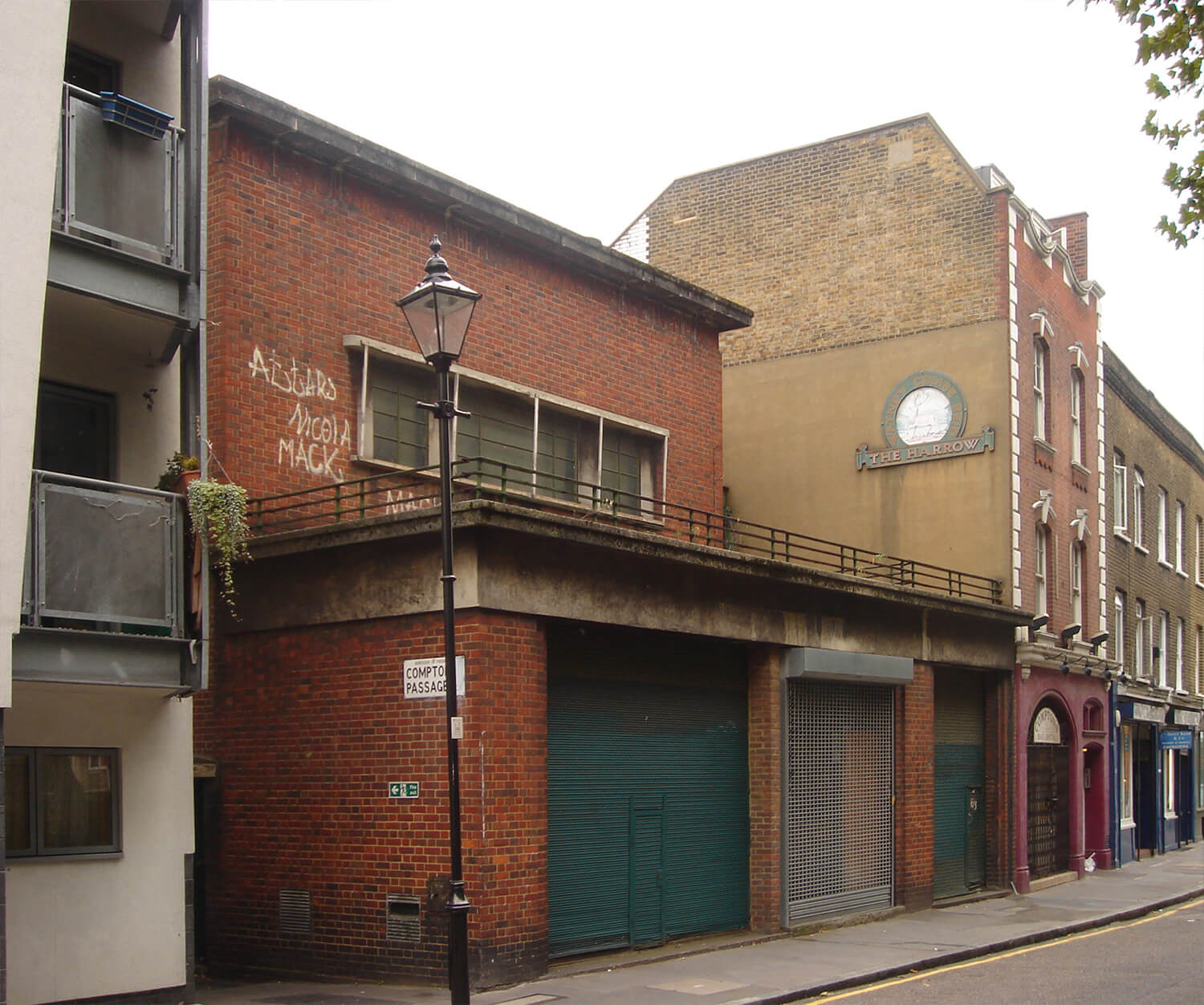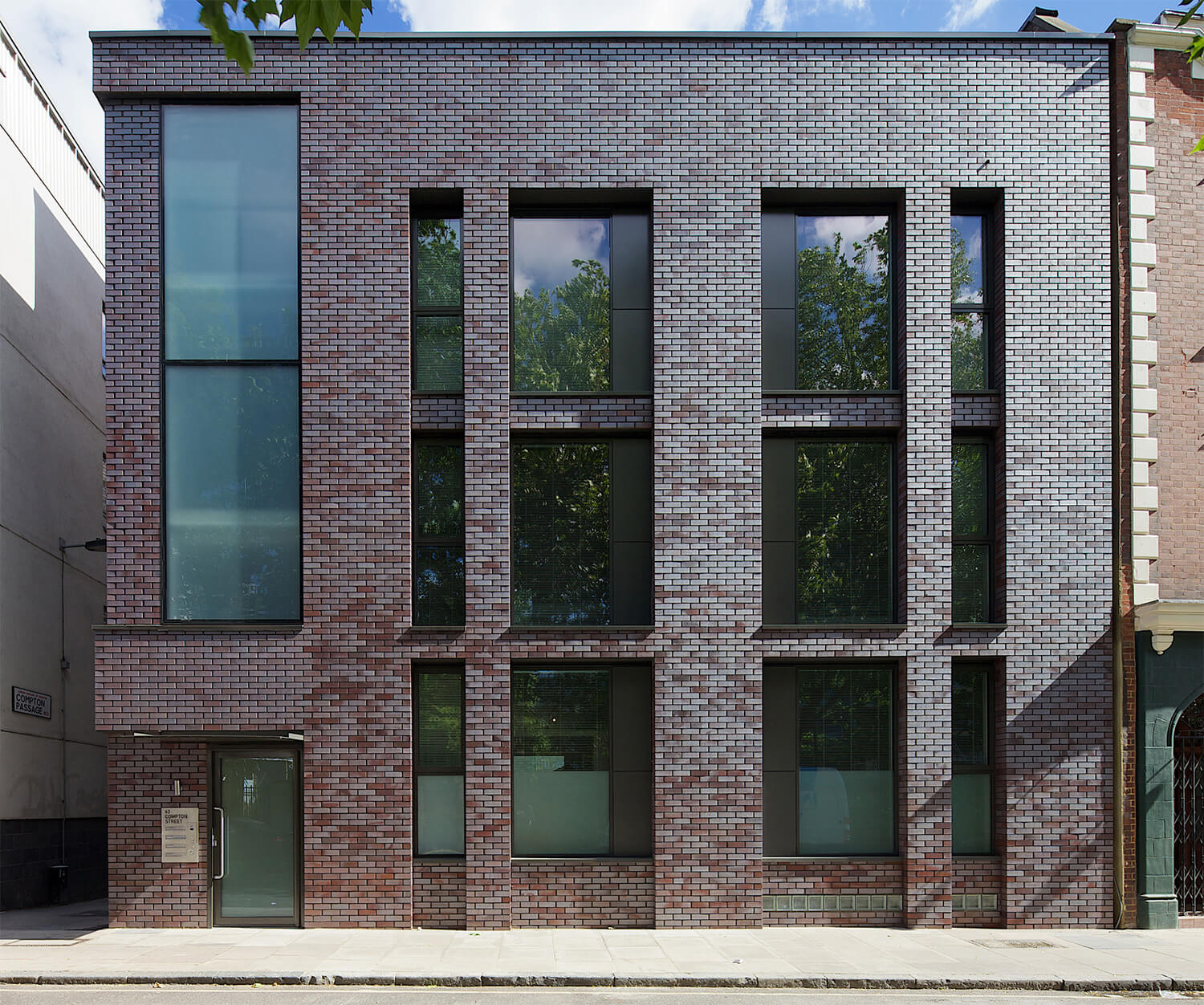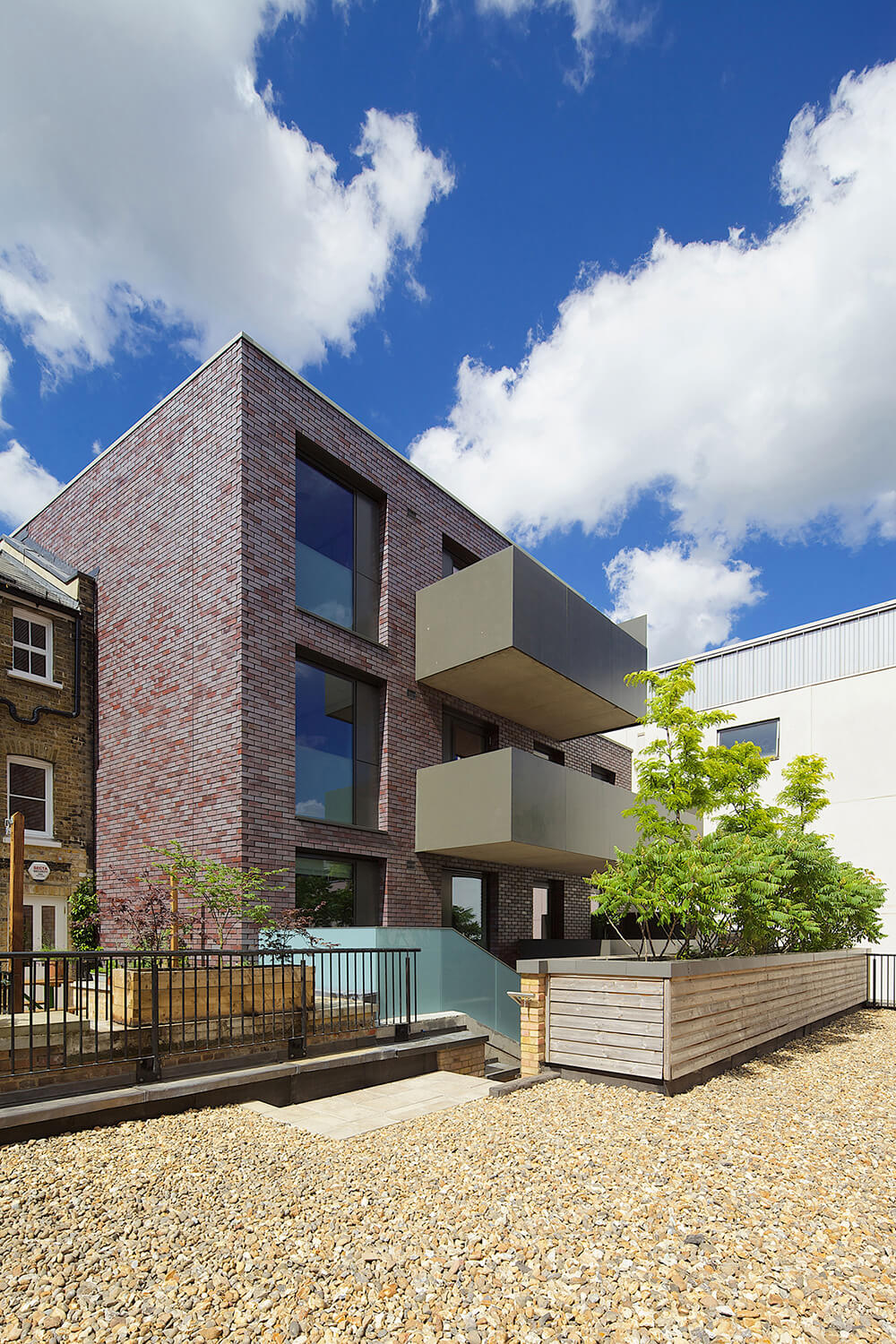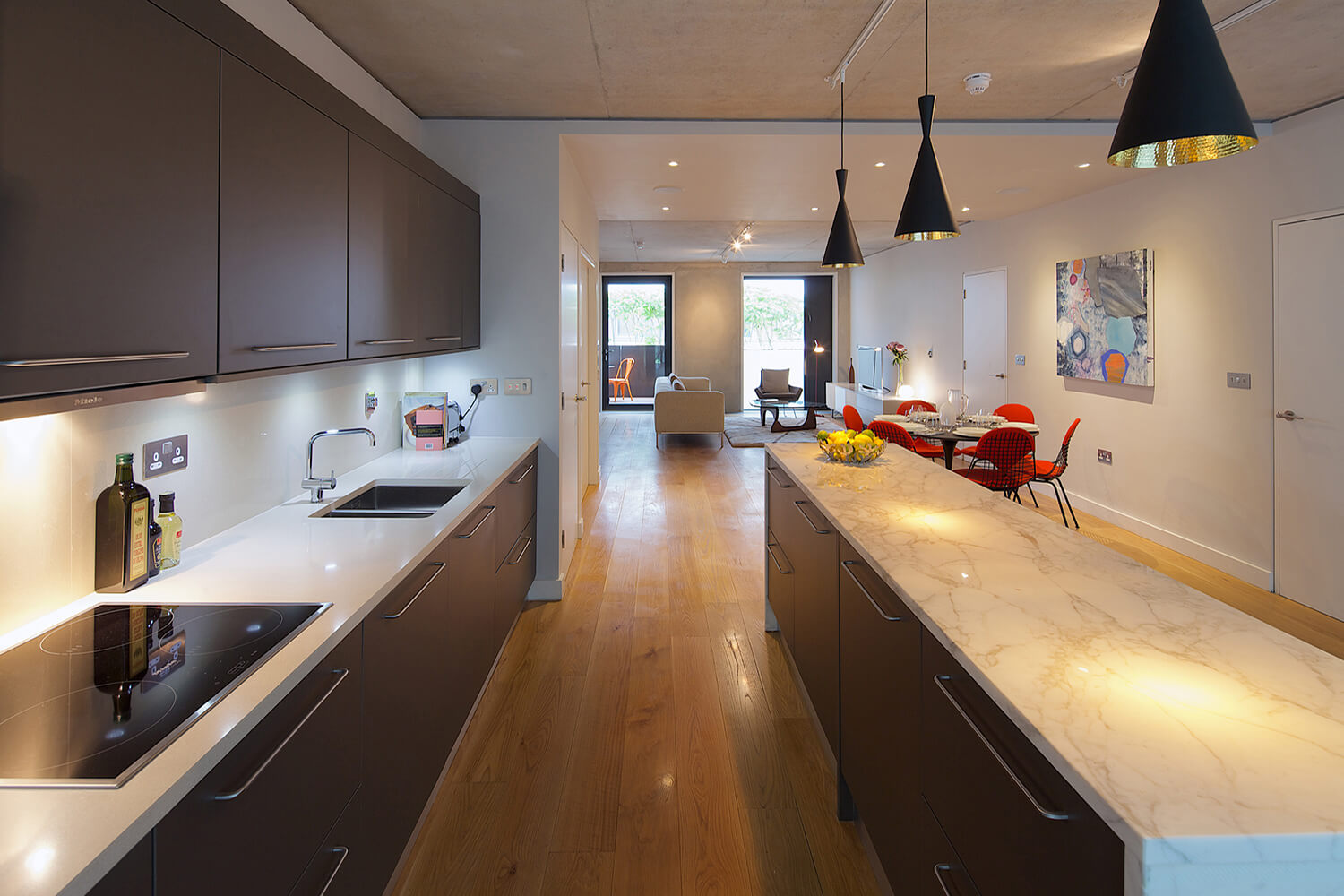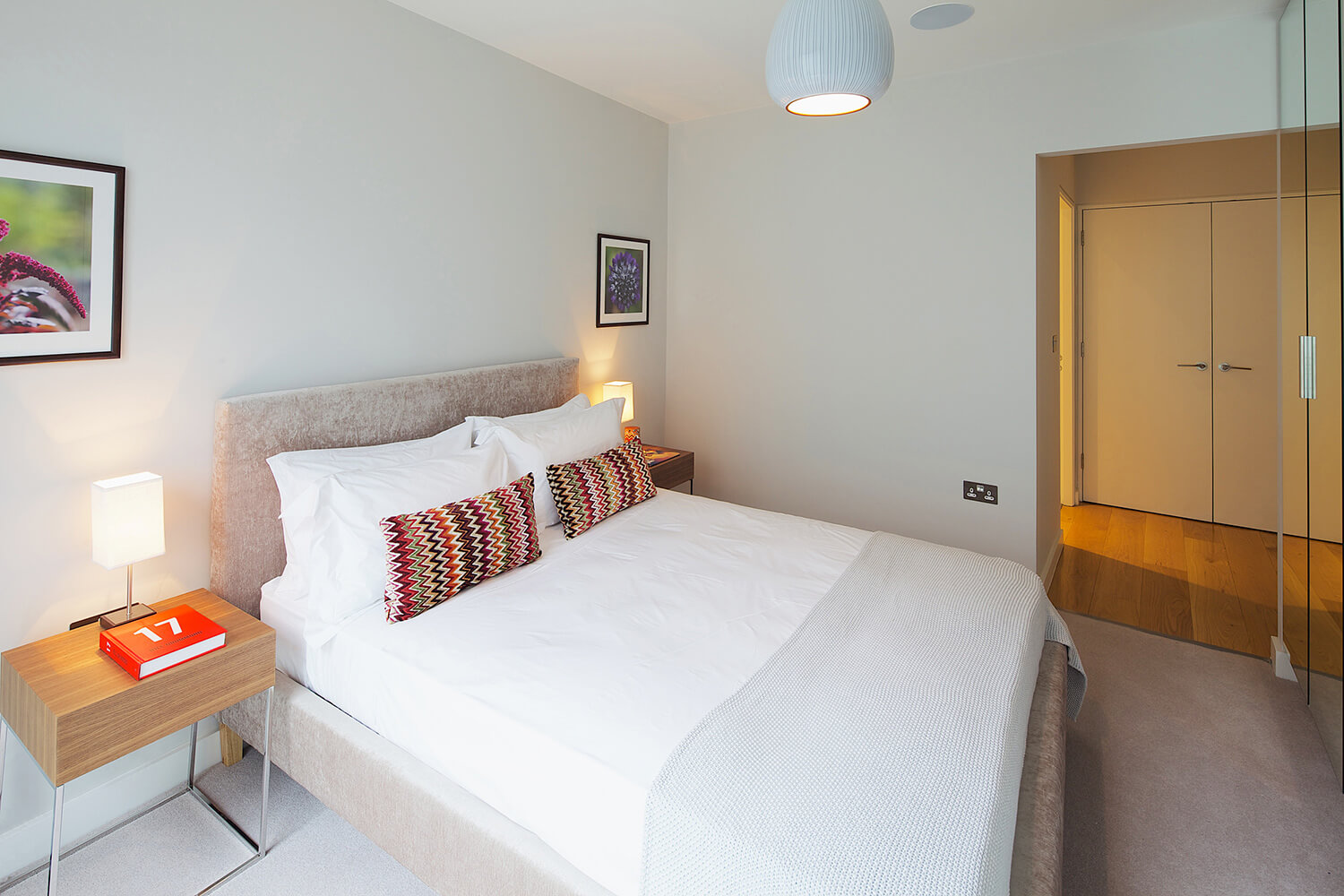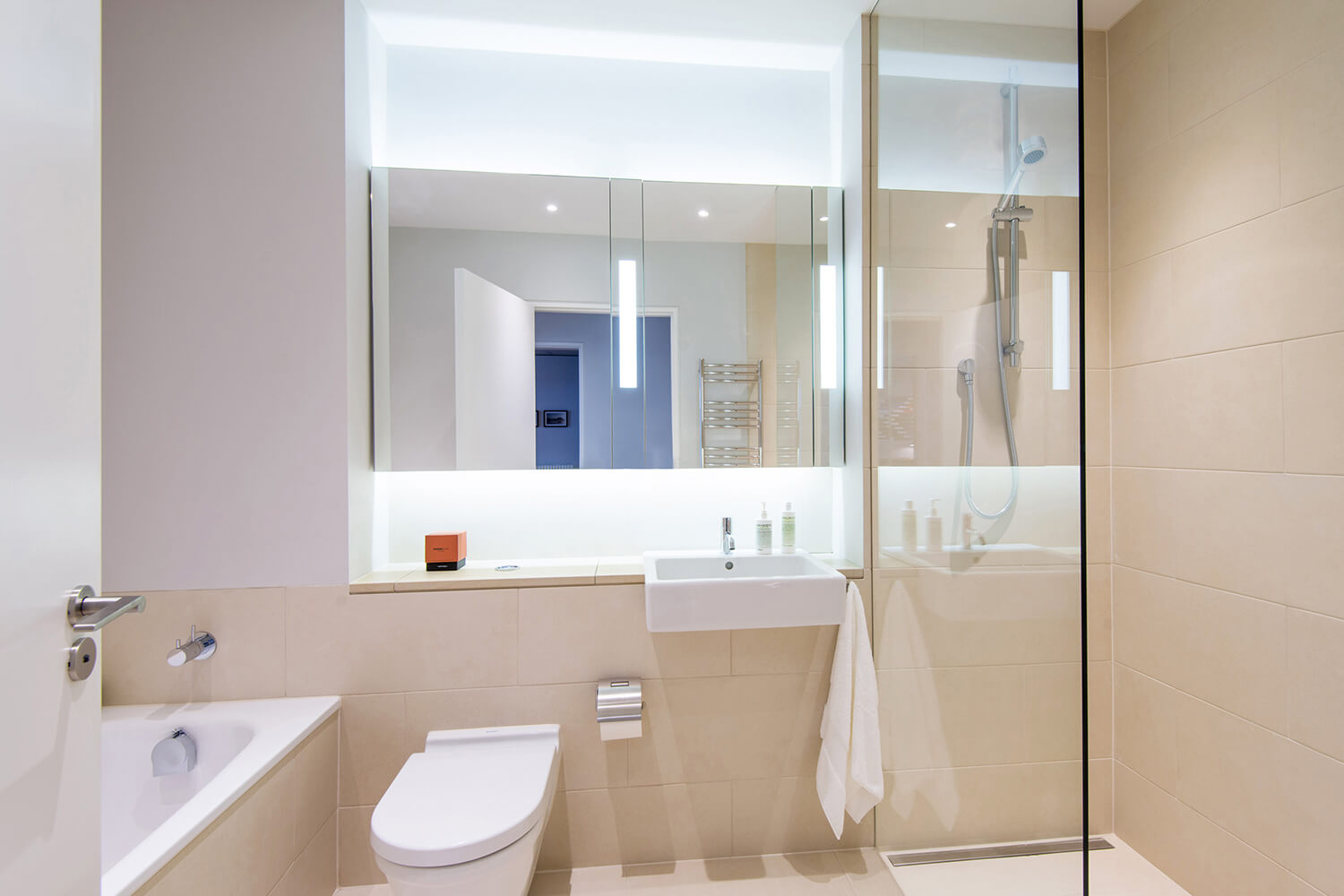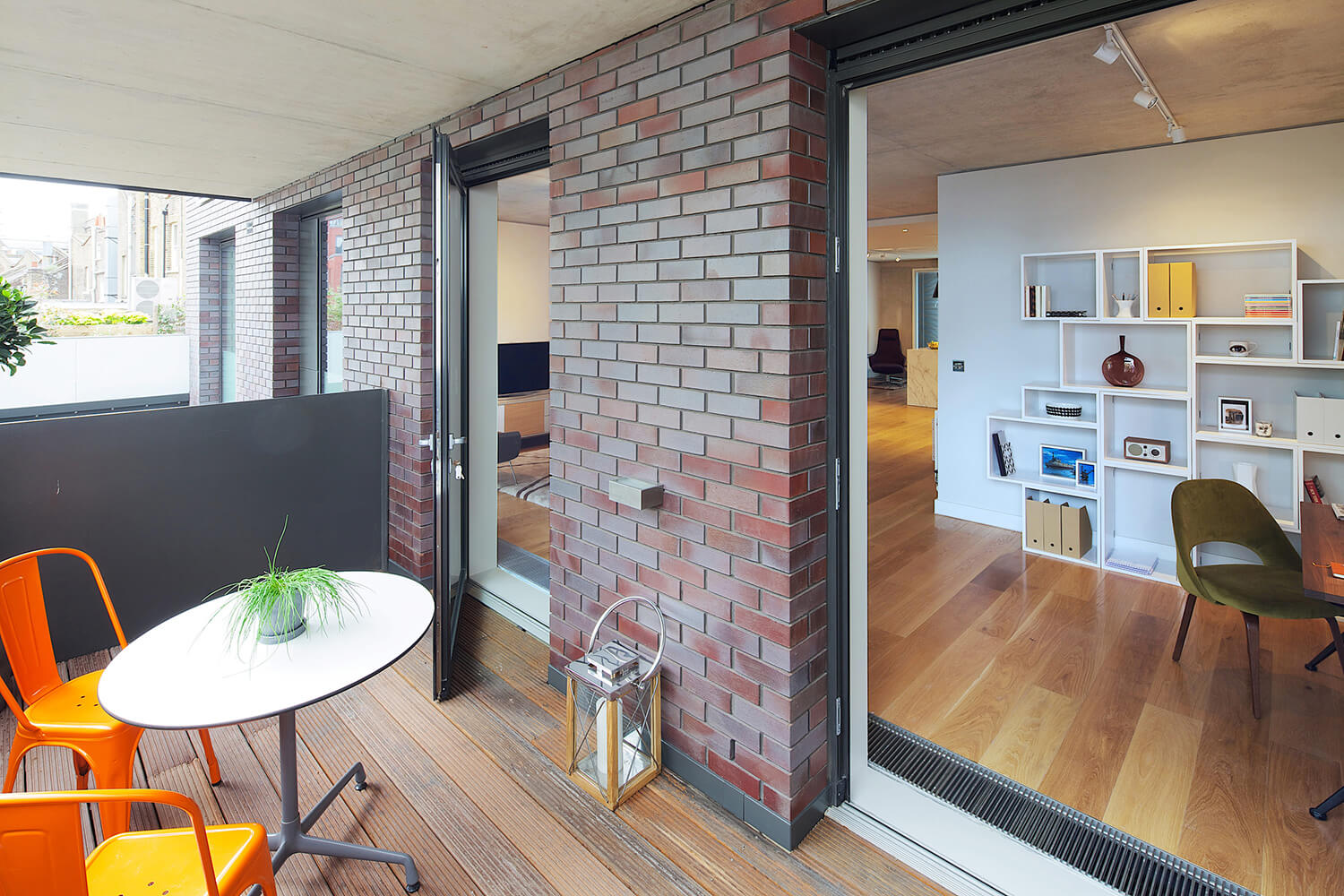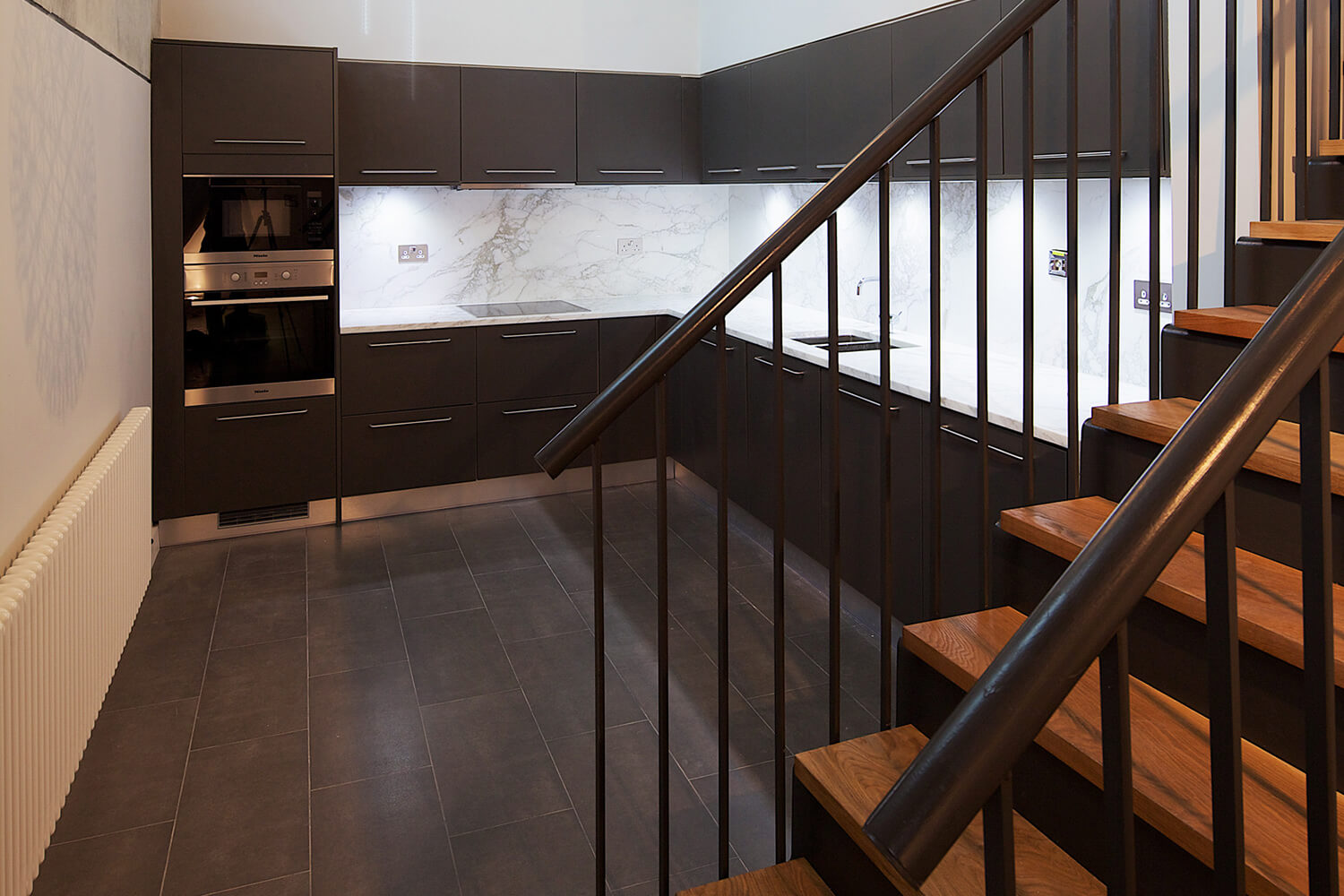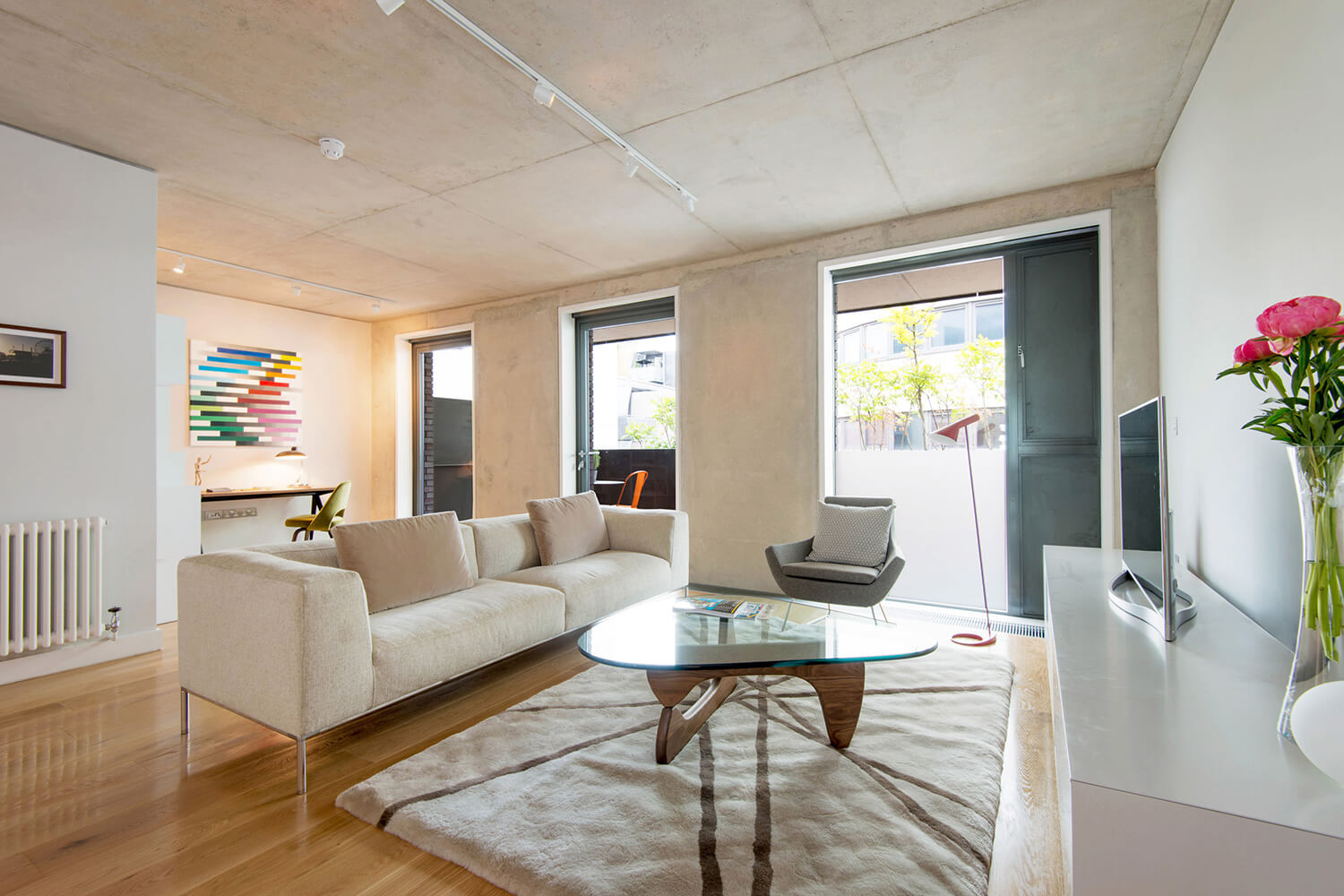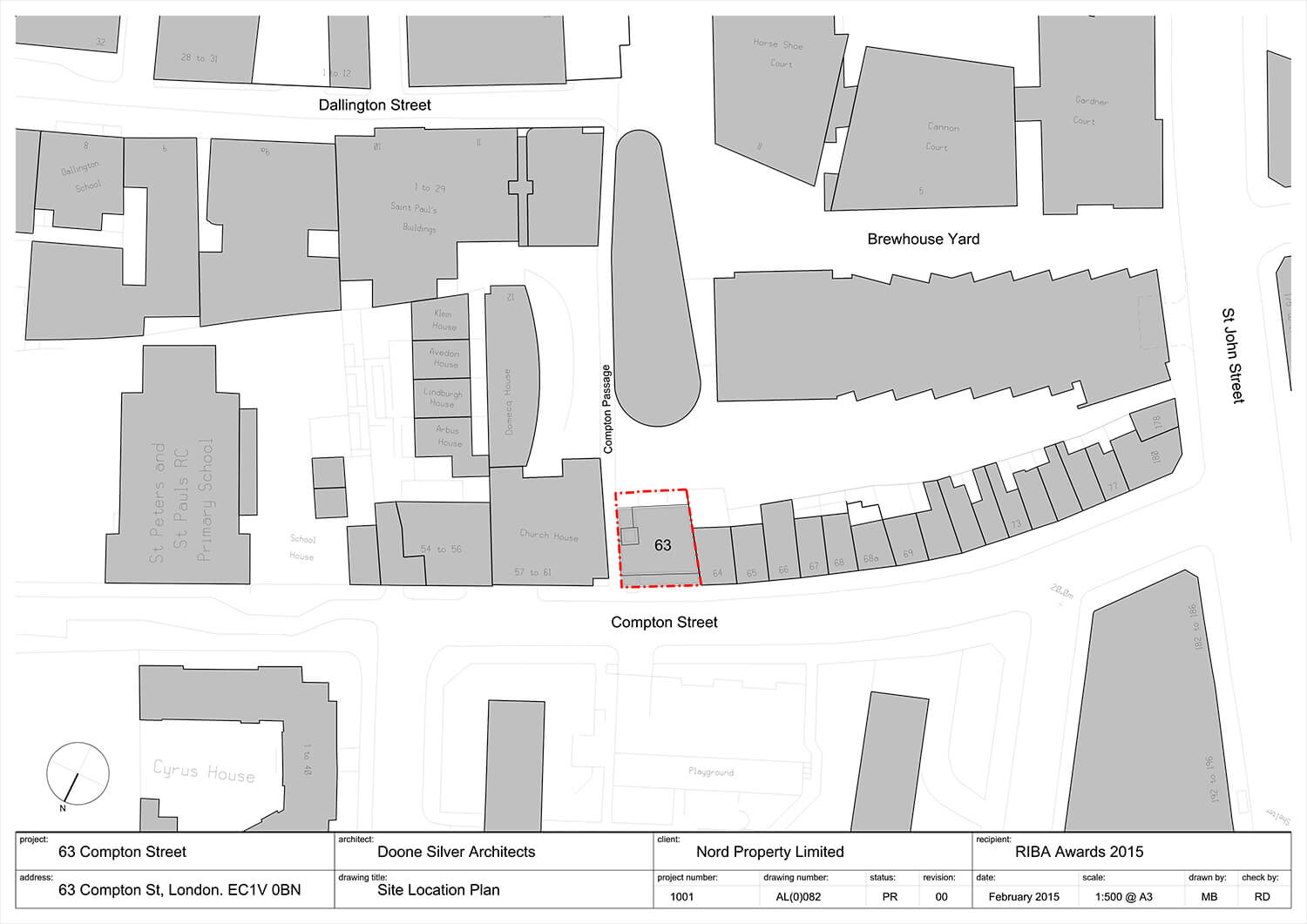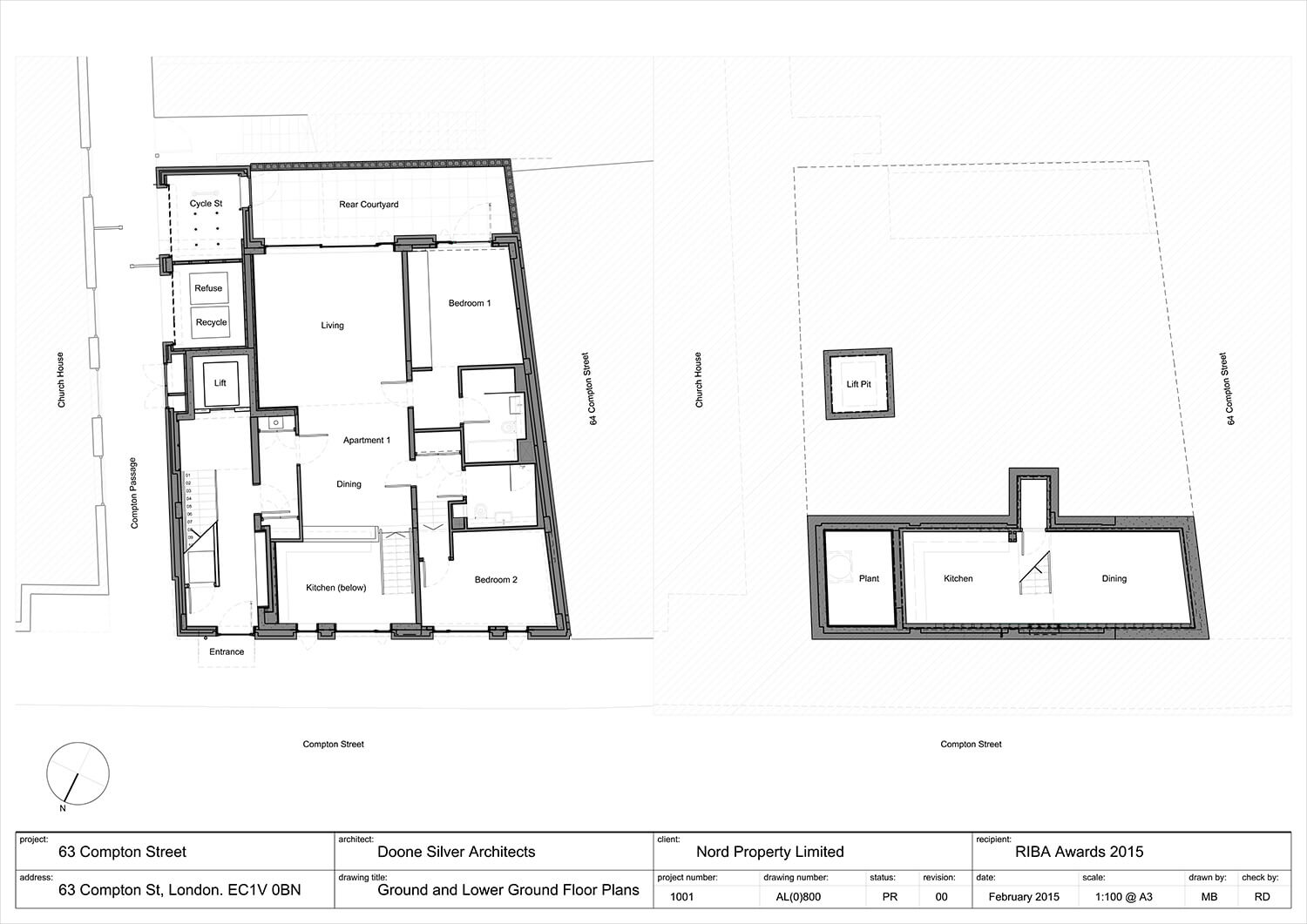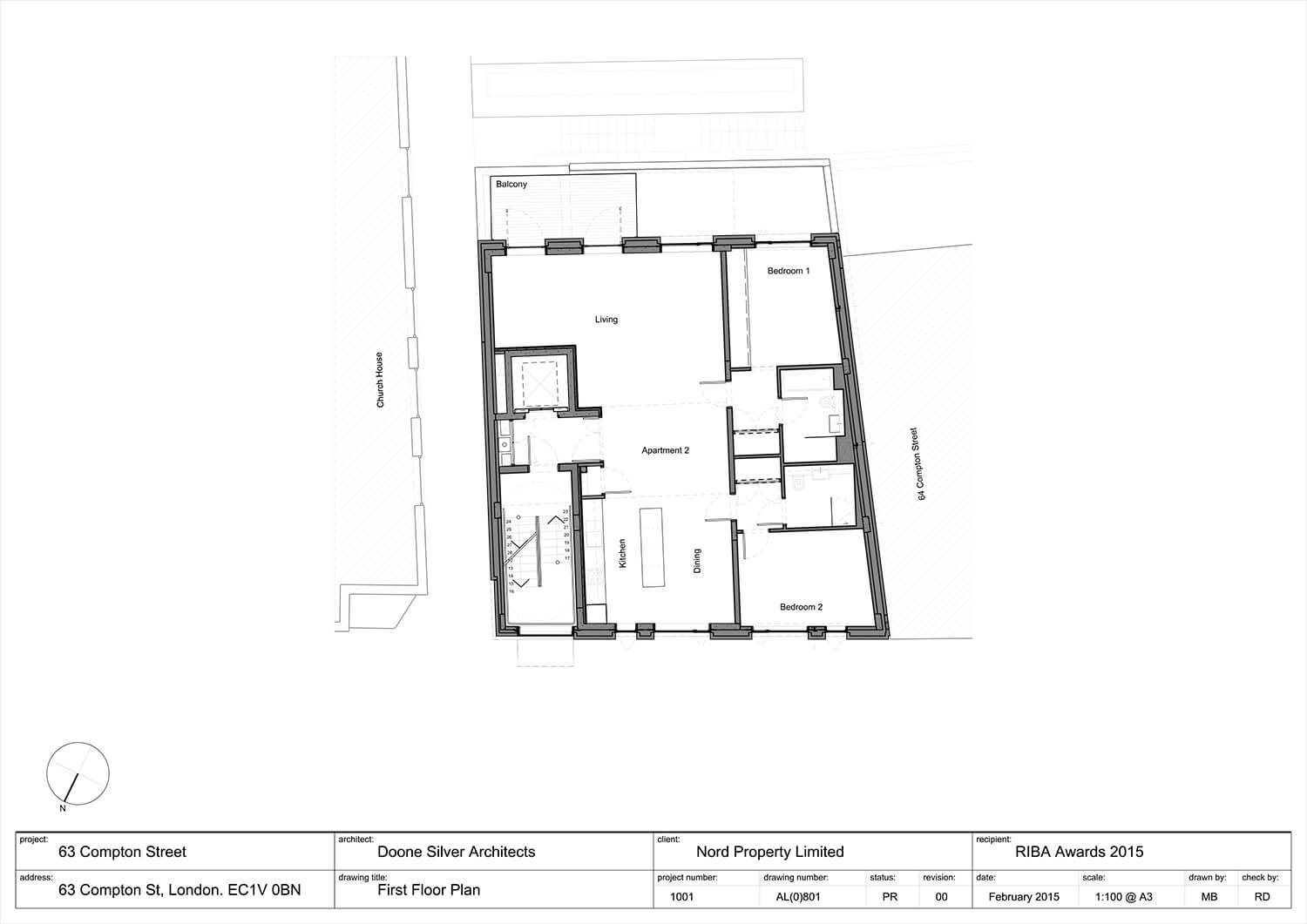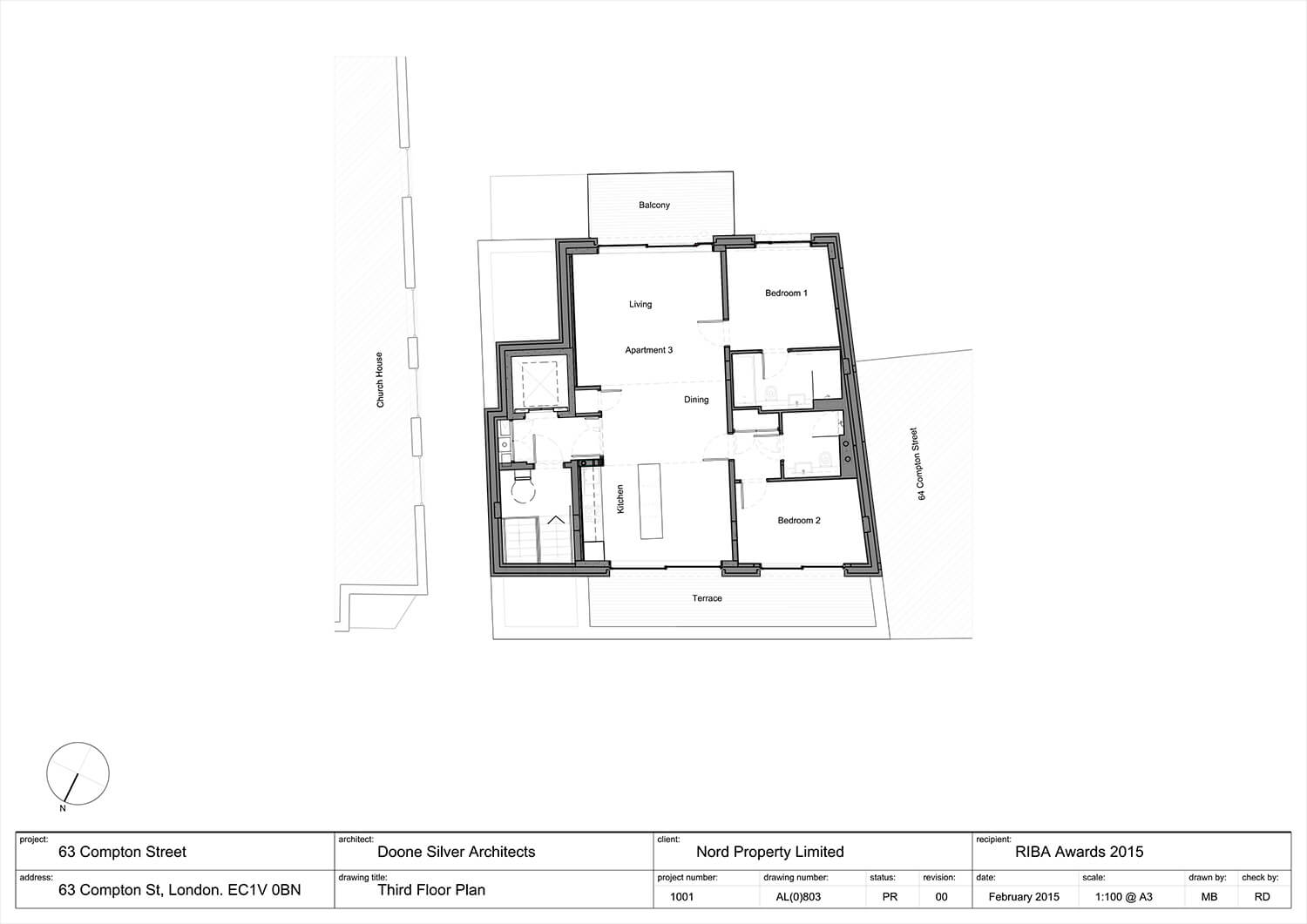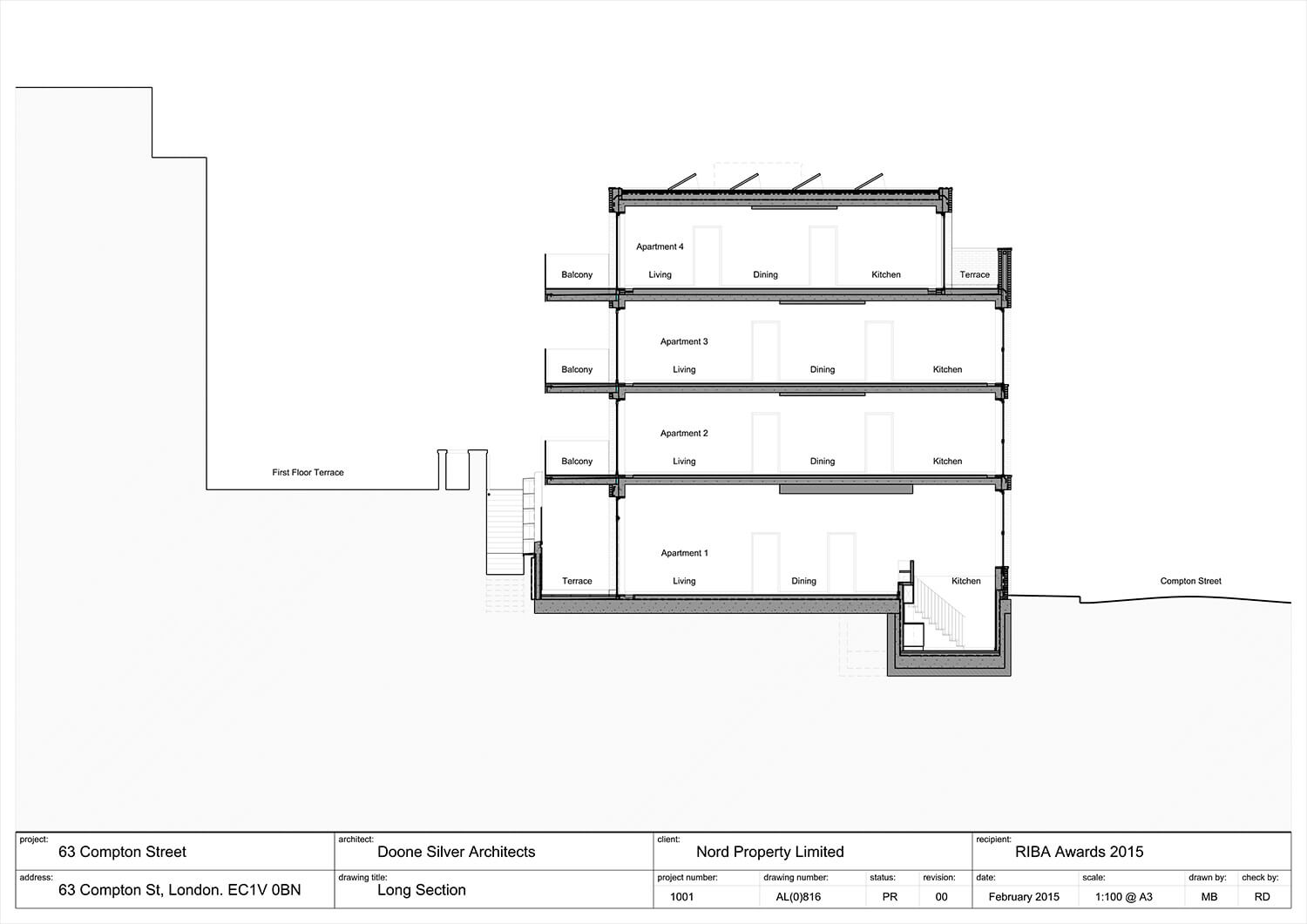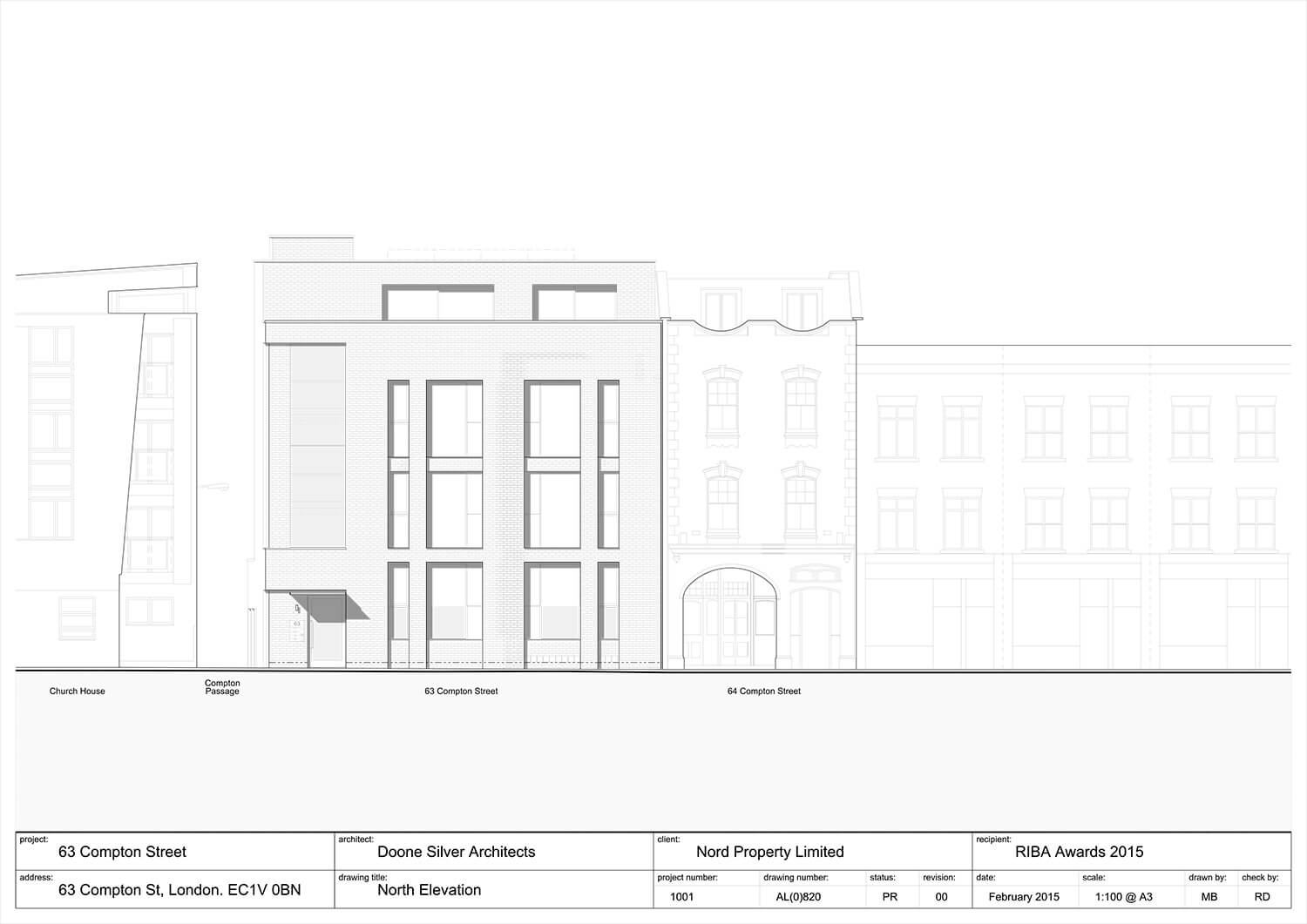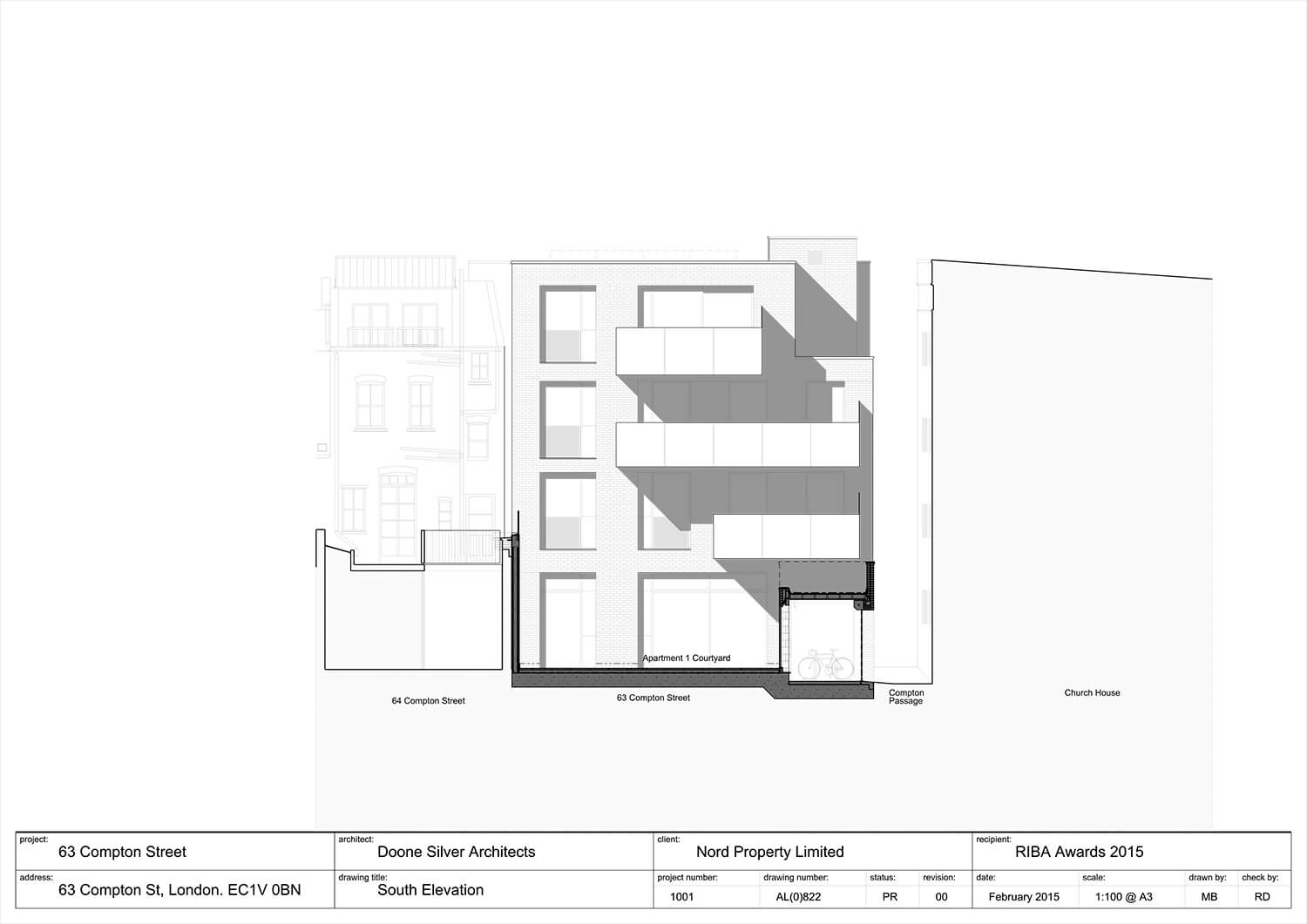63 Compton Street / Doone Silver Architects
63 Compton Street / Doone Silver Architects
Location
Located in the heart of Clerkenwell, London, 63 Compton Street is a newly completed 4-storey apartment building, created for Nord Development. Replacing a 2-storey electrical substation, the scheme adjoins a listed former public house and responds sensitively to the constraints of a conservation area.
Description
From the street, the building ‘reads’ as a 3-storey structure; the fourth storey is set back from the street, concealed behind a brick parapet and creating a generous terrace.
The rear of the building is set back from the site boundary by two metres to create space for a ground floor terrace and large south-facing balconies to the upper floor apartments. Four generously proportioned lateral apartments have been created, varying in size from 95m² to 120m², with one apartment per floor. Each of the upper apartments has its own private lift access. The ground level apartment comprises three interconnecting levels of space. These include a main ground floor level comprising the living room, bedroom and two bathrooms, with a kitchen/family room and second bedroom at lower ground floor level.
The building footprint is highly efficient with a shared access stair and lift. Each apartment comprises a dual aspect open plan living/dining/kitchen space, two bedrooms and two bathrooms. The second floor apartment includes a large sliding door panel in the living room to create a flexible third bedroom/study. Within each apartment an innovative auto-mist sprinkler system obviates the need for traditional corridors, maximising useable space. The system also allows direct entry into the 18 metre long open plan living/dining/kitchen areas from the private lift lobbies. Bedrooms and bathrooms are located away from the lift and stair core. The second bedroom arrangement is flexible and can include an en-suite shower room.
The building is constructed of insitu concrete. Internally this is left exposed, its robust character contrasting with the more muted palette of solid oak floors, Calacatta Oro marble and warm grey painted plasterwork and joinery.
Interior
Facade
The facade of blue/red/silver glazed Janinhoff brick responds to the adjacent red brick Victorian buildings as well as the blue engineering brick and dark blue/grey painted buildings prevalent in Clerkenwell. The sharp edged quality of the selected brick and the use of dark grey recessed mortar joints, creates a rich and varied texture.
On Compton Street, the elevational composition responds to local fenestration, with deep reveals providing articulation and shadow. The shift in scale to the large glass corner element and recessed brick plane folding around the building defines the termination of the terraced buildings on Compton Passage. This larger order also acknowledges the shared nature of the common stair within, which is lit by translucent glass, ensuring privacy.
The side elevation is composed as a simple, flush plane in response to the narrowness of Compton Passage. This elevation has no windows to respect the privacy of the residential building opposite and at third floor level the building volume is cut back towards the rear of the site to maintain daylight levels. At the rear, the building is ordered with windows and doors articulated as crisp-edged openings set deep into the brickwork. The form also reads in association with applied south facing steel plate balconies that step across the elevation and which create a constantly shifting pattern of light and shadow.
The scheme is designed to Code for Sustainable Homes Level 4 and features a green roof and photo-voltaic panels.
Drawings
Extra info
Client:
Nord Development
Cost:
£1.3million
Structural Engineer:
Heyne Tillett Steel
M&E:
Peter Deer Associates
Planning consultant:
Savills
Cost consultant:
Jackson Coles
Area:
538sqm



